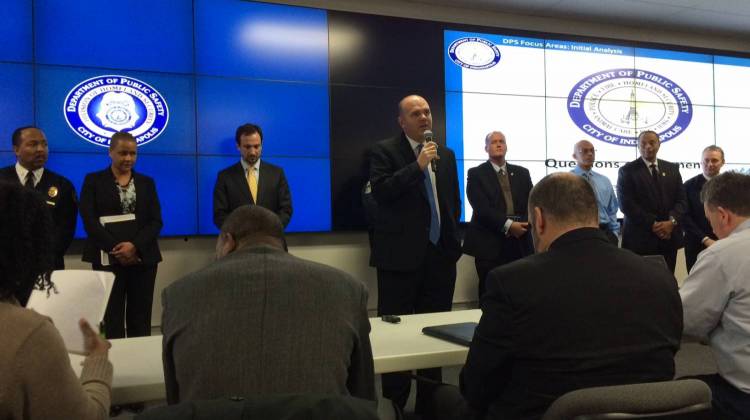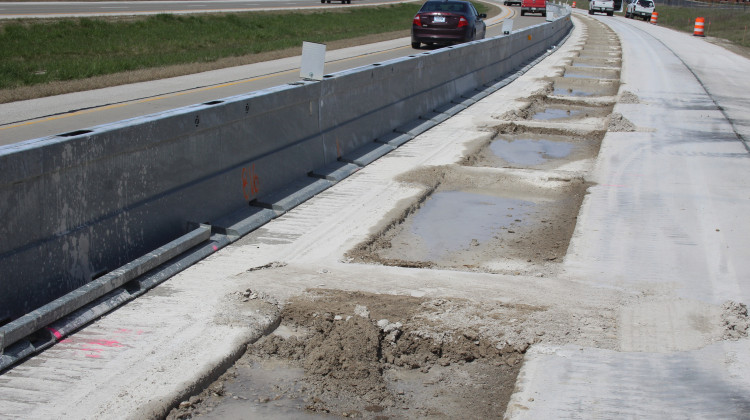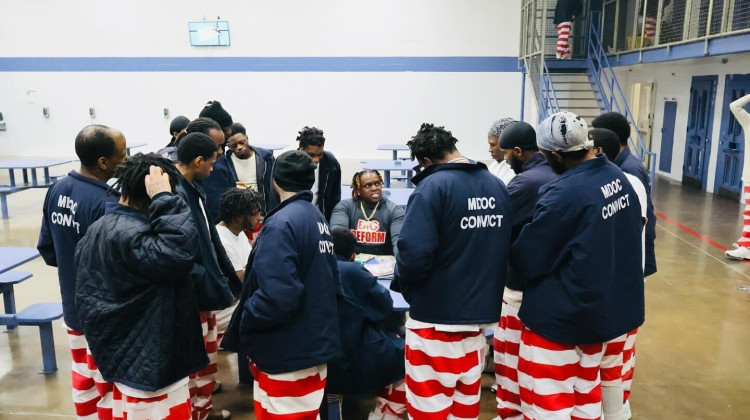
Department of Public Safety Director Troy Riggs and the eight DPS division directors announced their focus area goals for 2015.
Christopher Ayers/WFYIThe Indianapolis Department of Public Safety Tuesday outlined each of its eight divisions' goals to improve quality of life in the six high-crime focus areas DPS established last year.
The six areas--announced last October--include neighborhoods near 16th Street and Tibbs Avenue and 38th Street and Sherman Drive, among others. Public safety officials say improving quality of life in these six areas will lead crime reduction citywide.
The focus areas account for 4.7 percent of Indy’s population but 27 percent of the city’s criminal homicides and almost 30 percent of its non-fatal shootings. They also represent disproportionate amounts of blighted and vacant properties.
Since October, DPS has held work sessions and community meetings to determine how to address each area’s issues. Public Safety Director Troy Riggs says the goals announced Tuesday break down barriers between department divisions.
"If you look at the goals and objectives, they’re for those specific departments, but they overlap with the other departments," Riggs says.
Each of DPS’s eight divisions outlined specific measurable goals. For example, IMPD aims to reduce violent crime in the focus areas by five percent this year, while Emergency Medical Services will try to improve its ambulance response times to those neighborhoods.
Office of Reentry Director Chris Reeder says his office will identify 100 former prisoners at risk of reoffending and help them find support services.
"The problem is that when you have low education, low skillset in terms of being able to be employable in a job that’s going to give you a livable wage, and then you have no place to stay," Reeder says. "Those three things we find will be the highest level of need for the people who come back into our community, so those are the things we’re going to try to target."
2015 data will be reviewed early next year to determine success rates in each area.
 DONATE
DONATE






 View More Programs
View More Programs


 Support WFYI. We can't do it without you.
Support WFYI. We can't do it without you.